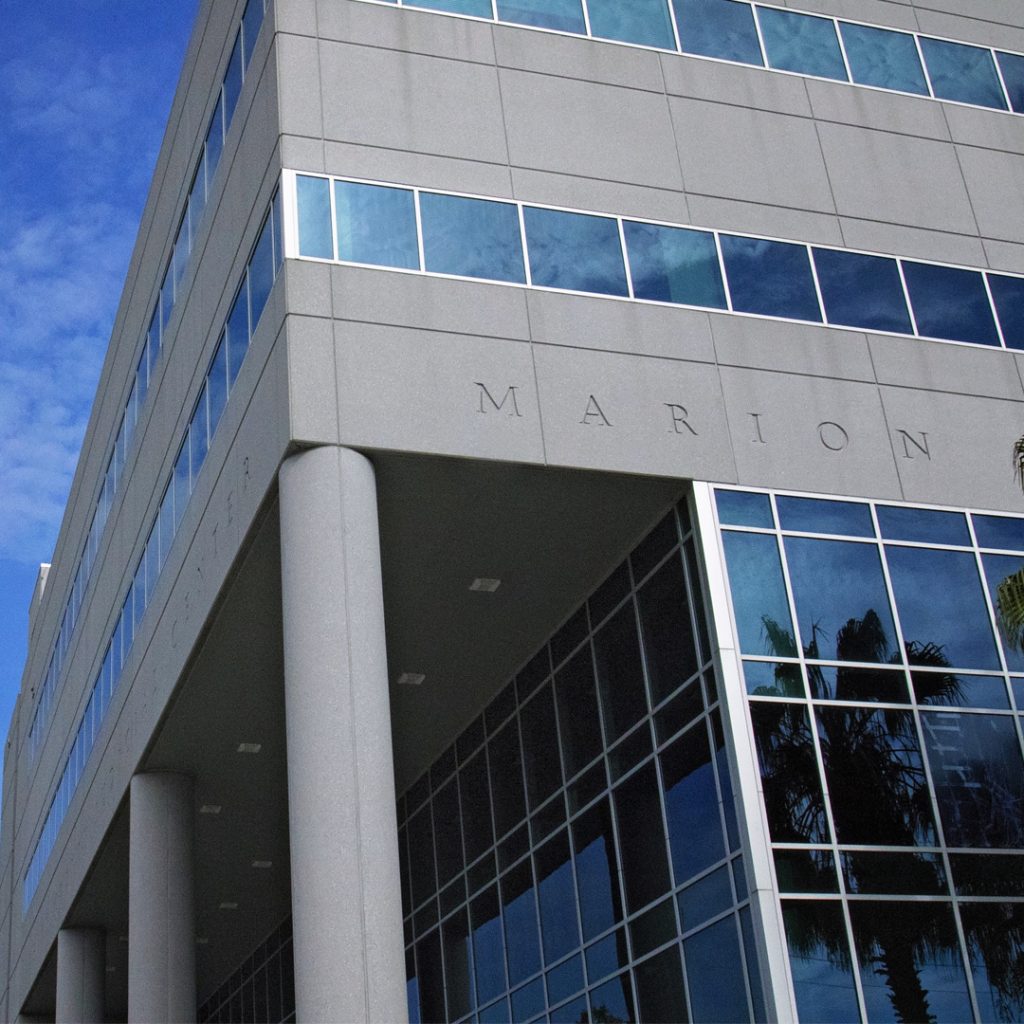For those with business in the court system, Marion’s COVID trends are looking better, but not where they need to be – yet

COVID-19 has halted much of the business at the Marion County Judicial Center, especially trials.
In a letter to top local judges earlier this month, Clerk of the Court David Ellspermann warned that a mounting logjam in court actions because of COVID-19 could overwhelm his staff, which is already short-handed while working through a hiring freeze and possibly furloughs in September because of a revenue shortfall.
Yet based on the criteria for doing so, the court system remains far away from resuming some semblance of normal operations, as the number of new COVID-19 cases is stubbornly escalated.
The Florida Supreme Court has delegated reopening decisions to the chief judges within the state’s 20 judicial circuits, a reflection of Florida’s geographic diversity as well as the workload of each regional court system.
Still, the high court’s plan for reopening emphasizes “some uniformity” in its criteria so “judges, court staff, justice partners, and the public feel confident that their safety and welfare are the primary considerations on which decisions are made.”
As it stands, the 5th Judicial Circuit, which includes Marion, Citrus, Hernando, Lake and Sumter counties, remains in Phase I. In that phase, “in-person contact is inadvisable, court facilities are effectively closed to the public, and in-person proceedings are rare.”
Fifth Circuit Chief Judge Daniel Merritt Jr. has adopted the guidelines handed down by the Florida Supreme Court for expanding access. So to go from Phase I to Phase II, which allows for “limited” in-person contact with appropriate protective measures, Marion County must meet the following:
1. Report no confirmed or suspected cases of COVID-19 in a courthouse within a 14-day period. Or if confirmed or suspected cases have occurred there, “deep cleaning and disinfecting of exposed areas” must be completed and employees involved must self-isolate or be quarantined.
2. Not be subject to state or local stay-at-home orders.
3. Report seven-day averages for new cases of 20 or fewer positives during the most recent two-week period, with the numbers trending down. And over that same time frame the seven-day averages for both hospitalizations and emergency room visits must indicate “decline or stabilization.”
4. Demonstrate two consecutive weeks of decline or stabilization, if the seven-day averages for new cases exceed 20, and both seven-day averages for the positivity rate over the most recent two-week period must be less than 10 percent.
5. If those conditions are not met, then both averages cannot be higher than 11 percent, and the community must demonstrate two consecutive weeks of decline or stabilization in the seven-day averages for both hospitalizations and ER visits.
“It’s all relative to the numbers,” Jeff Fuller, the circuit’s courts administrator, said of the reopening plan.
And by that metric, Marion County’s coronavirus numbers argue against popping the lid off the courthouse a bit.
Still, the good news is that state Health Department reports updated as of Wednesday show trends in a hopeful direction.
For instance, the weekly count of visits to Marion County ERs for “COVID-like illness” has receded over the past month, down almost 50 percent between July 19 and Aug. 16, the most recent data available.
Similarly, the daily percentage of ER visits for “cough-associated admissions” is down from about 1.5 percent around July 20 to about 0.5 percent now.
That suggests the community is stabilized or even declining on those fronts.
But beyond that, the numbers cannot satisfy Merritt’s criteria — yet.
Each week over the past two weeks, ending on Aug. 19 and Aug. 26, Marion County has averaged 119 and 81 new cases daily, according to the Health Department.
Meanwhile, the seven-day average of the positivity rate for each week was 13.8 percent and then 9.1 percent.
Getting better in many respects, but not there yet.





